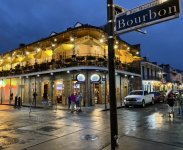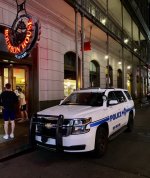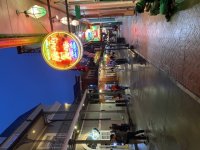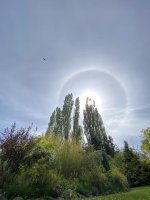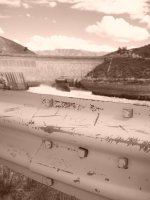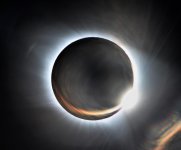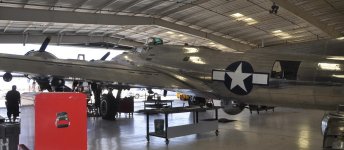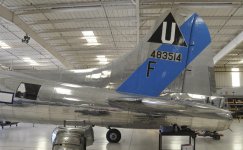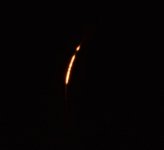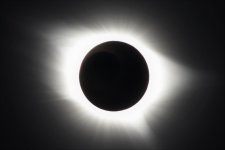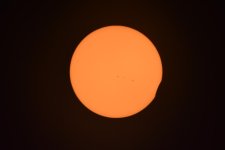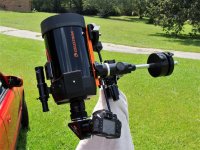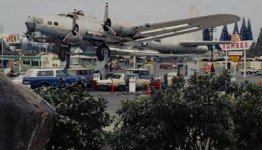You are using an out of date browser. It may not display this or other websites correctly.
You should upgrade or use an alternative browser.
You should upgrade or use an alternative browser.
Random Object Photographs
- Thread starter opaul
- Start date
Well, we desperately need the moisture. We've been in Red Flag watch/warnings for over a month. My main concern is the trees and bushes. All this heavy, wet snow is really putting a strain on them since the leaves are there and that's a lot of weight for those limbs.
My sister and her retired Marine husband live in Colorado Springs. She was just here in Houston helping out with Mom for a week. Her hubby sent pics of their yard . They lost three big trees and had numerous large branches come down.
Last edited:
Got books?
Not my photograph, but I just came across a NYT article on the $95m restoration project of the magnificent library at Trinity College, Dublin (where the Book of Kells is kept) and this was the breathtaking pic at the head of the article. The work started in April and in October 2023 the library will close "for at least three years"

Not my photograph, but I just came across a NYT article on the $95m restoration project of the magnificent library at Trinity College, Dublin (where the Book of Kells is kept) and this was the breathtaking pic at the head of the article. The work started in April and in October 2023 the library will close "for at least three years"

DUSTYDOGDAN
Member
Hair Trigger
US Veteran
Here are two phenomenon that occur during a solar eclipse. The first is called a "Diamond Ring". It occurs just at the first half second of totality, or at the last half second, first as the Moon covers, then uncovers, the solar disc. The last glint of the sun, or the first glint, depending, causes the bright spot, and the golden streak is a reflection of the glare in the telescope lens. This has to be shot without a filter, and timing is critical. If you wait too long, or shoot too soon, you don't get anything but blinding light, and risk burning out the camera's sensor. You DO NOT see this with the naked eye.
First, the "Diamond Ring":
First, the "Diamond Ring":
Attachments
Last edited:
RobertJ.
Member
I visited the museum in Mesa four years ago this month. I remembered seeing a B-17, so I checked my photos, and sure enough, it's the same one!
Attachments
Hair Trigger
US Veteran
Next is "Bailey's Beads" It is shot with a light reduction filter, and is taken just seconds before or after you'd try for the Diamond Ring. What you are seeing is the very edge of the Sun on the outside of the arc, and the edge of the Moon, on the inside of the arc. the beads are created by the mountains of the Moon blocking a tiny portion of the Sun's light, just before or just after totality. neither the Diamond Ring nor Bailey's Beads can be captured during a partial solar eclipse, it has to be a total event. These two phenomenon were taken during the 2017 total eclipse, from near Clemson, SC. I was using a 6" Schmidt-Cassegrain telescope and a Nikon D3400 DSLR camera at prime focus. A light reduction filter is required, because enough of the Sun is still uncovered to blind you, or burn out the camera sensor.
Bailey's Beads:
Bailey's Beads:
Attachments
Last edited:
Hair Trigger
US Veteran
here is the full Eclipse at totality, about mid-point. Totality only lasts from 1 to 2-1/2 minutes, depending on your location in the path of totality, which is just a few miles wide. The closer to the middle of the path, the more time you have. Totality can be (and has to be) shot without a filter, in order to see the corona, the hot, glowing atmosphere of the Sun, which is normally invisible except during a total eclipse.
The second picture is just at the beginning of the eclipse, at the point called "1st Contact", meaning the moon is just starting to cover the Sun. This has to be shot using a filter, which colors the Sun orange. If you could tolerate it, raw sunlight through a telescope is intense white light. Trying to look without a filter would burn your retinas and permanently blind you. Note the sunspots on the solar disc (the dark smudges).
Last picture is the telescope setup. I was using a manual equatorial mount to track the Sun. The filter fits across the front of the telescope tube.
The second picture is just at the beginning of the eclipse, at the point called "1st Contact", meaning the moon is just starting to cover the Sun. This has to be shot using a filter, which colors the Sun orange. If you could tolerate it, raw sunlight through a telescope is intense white light. Trying to look without a filter would burn your retinas and permanently blind you. Note the sunspots on the solar disc (the dark smudges).
Last picture is the telescope setup. I was using a manual equatorial mount to track the Sun. The filter fits across the front of the telescope tube.
Attachments
RobertJ.
Member
When I was a kid, B17s looked so big. They're not.
When I was a kid my dad brought me here. It was called The Bomber Gas Station, and was in Milwaukee, Oregon, a suburb of Portland. It looked massive! Years later, I saw one next to the Spruce Goose. It didn't seem as big as I remembered...
Attachments
When I was a kid my dad brought me here. It was called The Bomber Gas Station, and was in Milwaukee, Oregon, a suburb of Portland. It looked massive! Years later, I saw one next to the Spruce Goose. It didn't seem as big as I remembered...
I climbed through that exact airplane while on my way to Sr. ROTC summer camp at Fort Lewis in 1960. It was an experience I'll never forget.
John
Similar threads
- Replies
- 5
- Views
- 201

